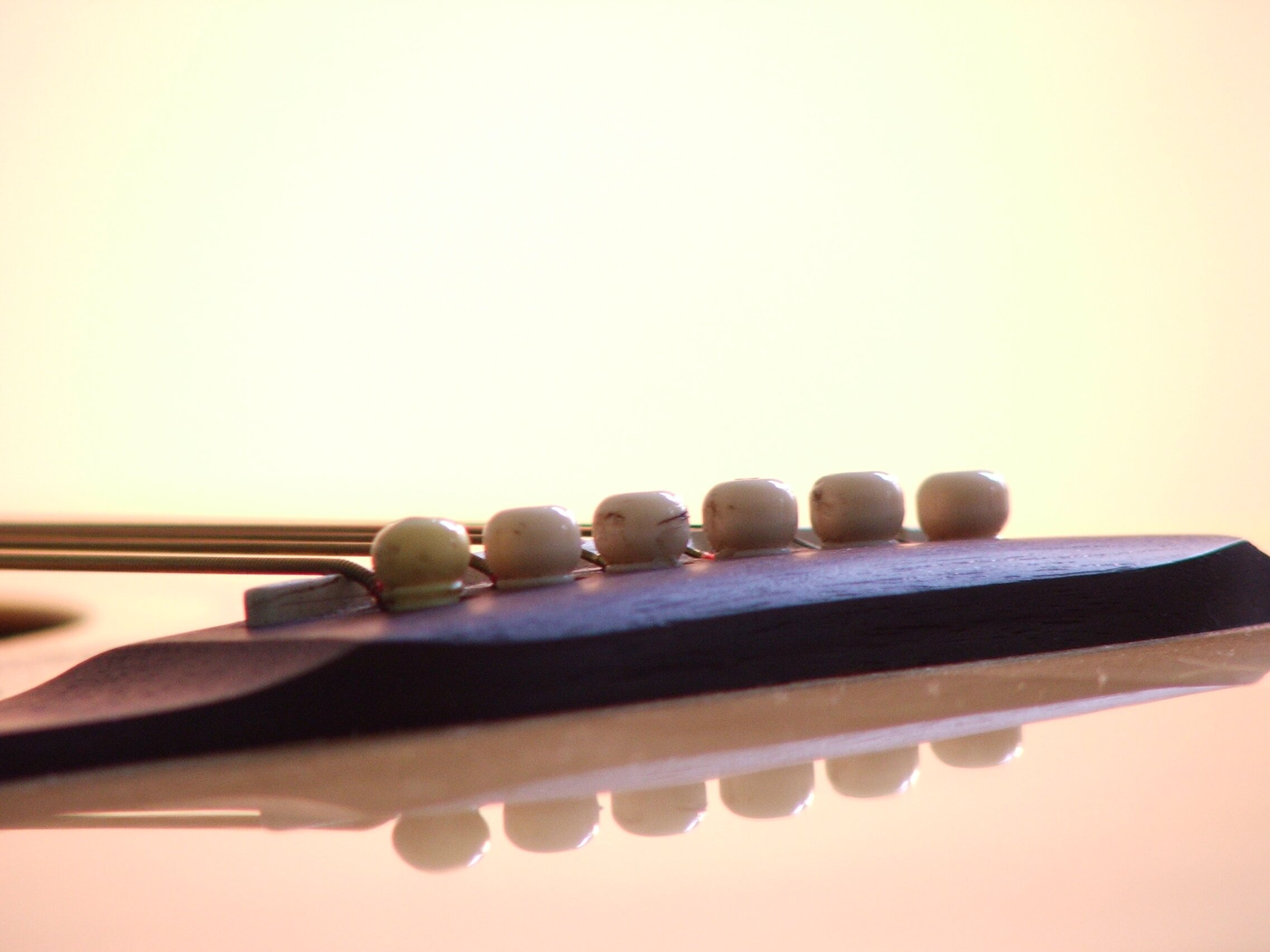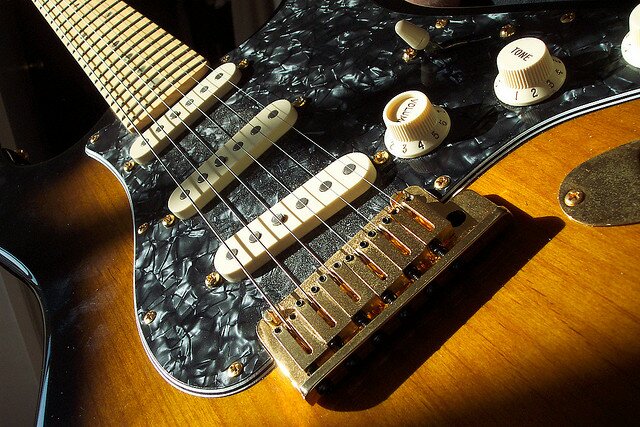Minor Scale Chords and Triads

As with the major scale, it is also possible to harmonise the minor scale, so that we get a series of chords that fit into the minor key you need to play in. Again, this is useful to know as once you understand this you will be able to work out what chords fit into what minor key. Obviously, you won’t always be playing in a major key, so having this knowledge of minor keys in addition to major keys will give you a good all round knowledge. Having this knowledge will be invaluable when song writing, coming up with parts and pretty much every aspect of working as a musician.
When harmonising the minor scale, the same principals apply as when we were harmonising the major scale; all we are doing is stacking the notes of the scale in thirds. By doing this we create a collection of chords, that are both minor and major, in a certain order that is the same for every key you chose to repeat this process in. This means that once you understand how to harmonise the scale, you can simply follow a formula to tell you which chords fit into what minor key.
Let’s start by looking at how we’d take the notes from the A natural minor scale and harmonise them to create the chords that fit into the key of A minor. Below is a diagram of the notes of the A natural minor scale:
Looking at the diagram you can see that the first note (A) has been harmonised with the third above it, and the third above that, to create the first chord of the scale. The resultant chord is A minor. We know it is a minor chord because the interval between the root note of the chord (A) and the middle note (C) is one and a half tones, otherwise known as a minor third. If the interval happened to be two tones, otherwise known as a major third, we would have a major chord on our hands.
As we go on to harmonise the other notes in the scale, we will create chords stemming from each note of the scale, treating each individual note as the root note of a chord. As with the major scale, we will end up with a series of either major or minor chords, depending on the interval between the root note of the chord, and the middle note, this being either a major or minor third.
The chart below shows you in detail what happens when you harmonise each note with the third above it, and the third above that, and also the pattern of resultant chords you end up with. For the first note, the diagram shows you how the chord is created and what notes need to be included. Try and work the rest through in your mind to give you a good understanding of what you need to do to harmonise the scale.
As you can see from the chart, when you harmonise the natural minor scale, you end up with the following pattern of major and minor chords:
Minor – Minor – Major – Minor – Minor – Major – Major – Minor
This pattern remains the same if you chose to harmonise the natural minor scale in any key. As long as you follow this formula along the notes of the scale, you should be able to easily work out what chords are included in what minor key. Remember, to first work out what notes are included in the scale you can use the step formula detailed in the lesson before:
Tone – Semi-tone – Tone – Tone – Semi-tone – Tone – Tone
For example, if you were to harmonise the natural minor scale in the key of D minor, first work out the notes using the formula above. Start on a D, step up a tone (two frets), then step up a semi-tone (one fret) and so on until you reach the end of the formula.
Once you have done that and worked out the notes in the D natural minor scale you can then go on to harmonise it to find out what chords are included in the key of D minor. Simply follow the chord formula above. This will tell you that the root chord will be D minor, the second chord will be E minor, the third chord F major and so on. The diagram below shows you the resultant chords when you harmonise the D natural minor scale. Note that the order of major/minor chords is exactly as the formula dictates:
So, once you have remembered to the two formulas; the step formula to work out the notes in the scale, and then the chord formula to tell you what chords are in what order, you should be able to harmonise the natural minor scale in any key. Use the random key finder below to practice working out the natural minor scale in any key, and then harmonising the scale in the key you have just worked the scale out in.
image credit – dgrinbergs









